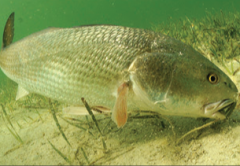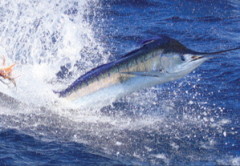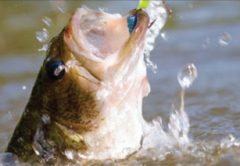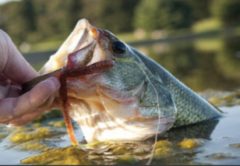It starts sometime in August. Millions of mullet filter out of the marshes of the Carolinas and beyond, starting a migration to their wintering grounds in south Florida. This mass migration of mullet, from fingerlings to full grown adults, ushers in some of the most frenzied and exciting fishing of the year along Florida’s east coast. This moving smorgasbord of bait attracts predators of all types. There will be plenty of bluefish, jacks, ladyfish and Spanish mackerel to keep anglers entertained along with redfish, seatrout, snook and flounder for those itching to take home fillets. Monster tarpon show up often enough to leave us with some incredible fishing stories, and at times the number of sharks can be awe inspiring or terrifying depending on your perspective.
Along central Florida, the first pods of mullet show up in late August. The run really kicks up in mid-September and remains strong until the end of October. Many years the mullet schools linger on and offer good fishing almost until Thanksgiving. Most of the predatory species are available the duration of the mullet run, however opportunities for tarpon and snook seem to fade out by mid-October.
The mullet run is primarily a beach fishing game. Since the mullet are constantly migrating south, every beach along the Florida coast will have its moments of great fishing, but some areas are more consistent than others. Look for beaches with a deep trough along the shore. Snook, redfish and flounder like to patrol these troughs often just outside of the waves breaking on the sand. At high tide tarpon will sometimes move into the trough. Hundred pound plus tarpon busting mullet just a short flip cast from shore is a sight you won’t likely forget.
Inlets like Ponce, Port Canaveral and Sebastian are awesome places to target the mullet run. Jetties, particularly on the north side of the inlet, are a barrier to the southward migrating mullet. Large schools of bait will gather along the north side of the jetty which attracts all sorts of predators. The tips of jetties are also good spots to fish as snook, redfish, mangrove snapper, flounder and more will gather there to pick off mullet as they make their run around the end of the jetty. Keep in mind the excellent fishing around jetties is no secret so bring an ample dose of patience, courtesy and cooperation if you choose to join the crowd.
Timing is important with the mullet run. The mullet tend to come through in waves. Some days acre sized schools will darken the water as far as the eye can see. Other days the run will be little more than a trickle. Online surf fishing forums and calls to beach side bait shops might help tip you off when the run is going strong, but nothing beats real-time reconnaissance or a network of fishing buddies who are willing to tip you off when the bite is good.
Also keep in mind the mullet run coincides with the peak of hurricane season and the start of winter cold fronts. Blustery weather from fronts and tropical systems can blow out fishing opportunities for days, sometimes weeks at a time. For this reason, the most successful anglers are the ones who remain flexible and fish as much as possible whenever conditions allow.
My favorite time to be on the beach is just as the first rays of light peak above the horizon. The first hour or two of daylight seems to provide a reliable bite even on days when the mullet supply is minimal. This is an especially good time to fish topwater plugs – some of the strikes are incredible. When it is good, a hot bite lasts all day, but most of the time activity tapers back when the sun gets high. Often the feed will pick up again in the evening as the sun sets, although this is not as consistent as the morning.
Fishing the mullet run can be pretty straightforward and simple. Live finger mullet are almost guaranteed to get bit, but dead finger mullet and cut bait also work. If you want to tangle with something big, a chunk of freshly caught jack or ladyfish, or a bluefish fillet will likely tempt a feisty blacktip or spinner shark.
Lures can really shine during the mullet run and will often out fish bait when the bite is on. Just about any lure that somewhat resembles a mullet will get strikes. Topwater plugs are my favorite, but sub-surface swimming plugs tend to work better when the surface bite slows down or when tarpon are your target. Jigs work great but can be shredded up quickly if there are a lot of bluefish in the surf. Spoons are probably the most universal surf lure. They cast far, track well in rough surf, catch almost everything, and are practically indestructible.
Reels should hold at least 300 yards of line if you want a chance at landing some of the bigger fish you might hook in the surf. Thirty to fifty pound test line is recommended for sharks and tarpon while twenty pound test will work for most other fish. Fifty to sixty pound monofilament or fluorocarbon leader works for most applications (up to sixty to eighty pound for tarpon) and add a couple feet of 100 pound test single strand wire if you want to target sharks.
Regardless of how you fish the mullet run, now is the time to hit the beach and inlets for what might be the most exciting and fun fishing of the year













